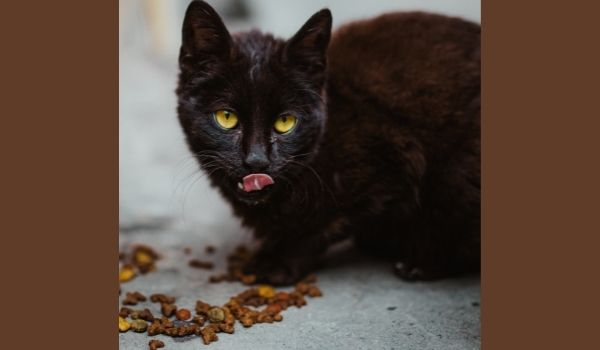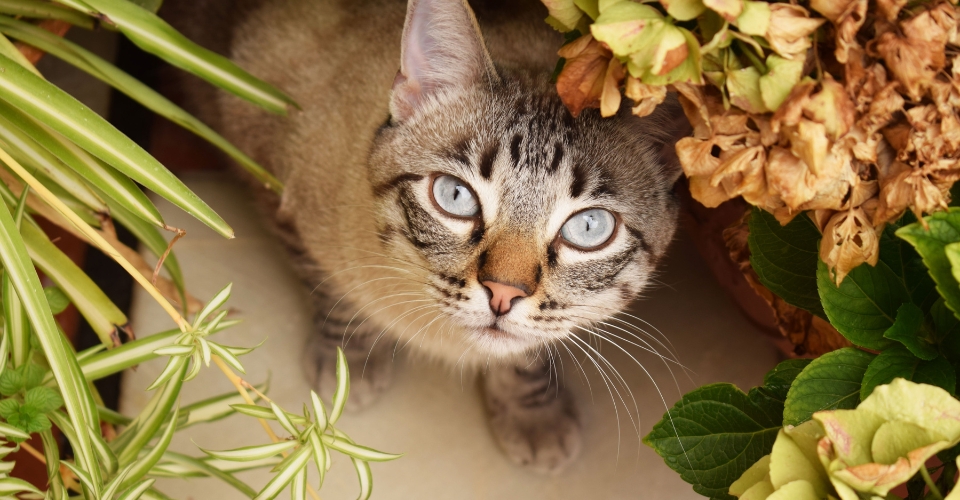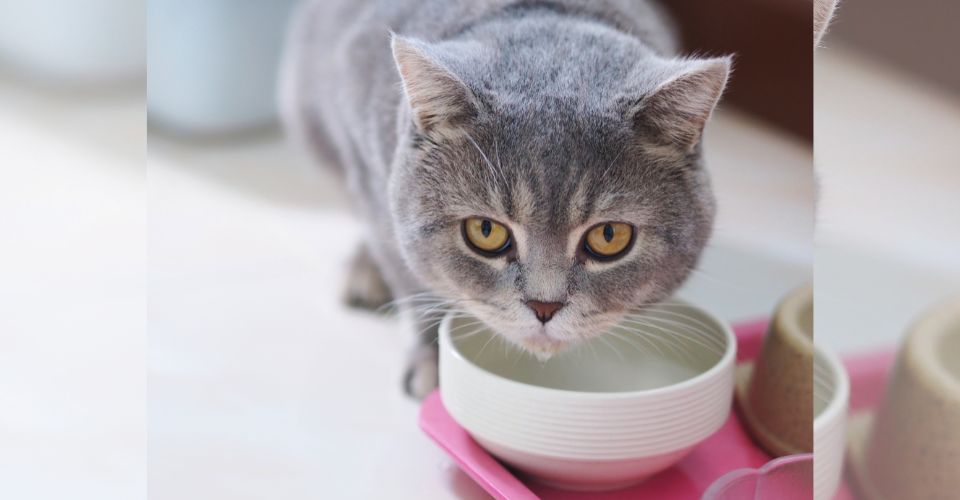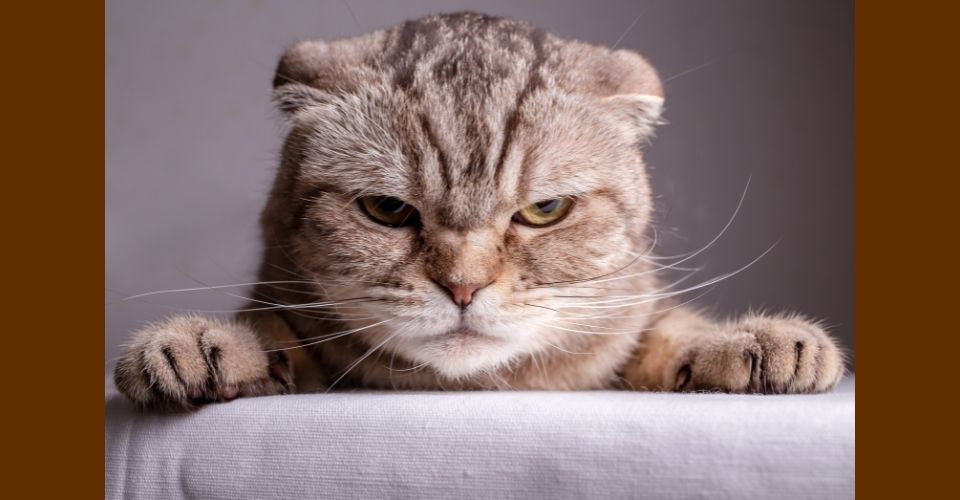Pets are our adopted family, a big part of our daily routines. But as our lives overlap, we wonder if we are taking good care of them. Eating with your family, you reach out to grab an ear of corn, the cat meows, you think of giving her some, and just when you are about to do so, you ask yourself, can cats eat corn? Is it okay to remove some from the cob and share with them? It is a legit question since cats are carnivores, and their ability to digest grains could be a matter of concern. Let us help you navigate this topic and make informed decisions.
Can Cats Eat Corn?
Yes, cats can eat corn, but within proportion. Cats are carnivores, and most of their protein comes from animal sources to fulfill their dietary requirements. However, they need a well-balanced meal with the right nutrient mix such as proteins, carbohydrates, and fats. The Association of American Feed Control Officials (AAFCO) suggests 26% – 30% protein, 9% fat, and 10% carbohydrates.
Corn is a rich source of carbohydrates, proteins, and several vital antioxidants and minerals, whereas the fibers help improve their gut health. Cats enjoy certain grains, including corn. It is an essential part of commercially available feline food.
Apart from the corn that comes in the cat food, you can offer a small helping of well-cooked coarsely ground cornmeal.
However, corn chips, tacos, or any other meal that contains seasonings, onion, and garlic are off-limits. Vets suggest that 90% of the feline diet should comprise well-balanced commercially available cat food. Look for feed that carries an AAFCO approval statement for nutrient adequacy on its label.
Additionally, while offering treats, always keep in mind the 90/10 formula. That is, 90% of their daily caloric intake should come from their regular food and only 10% from treats. Sharing table scraps is not a good idea, as it will encourage begging behavior and prompt them to sneak human food when you are not around.
Nutrient Value of Corn
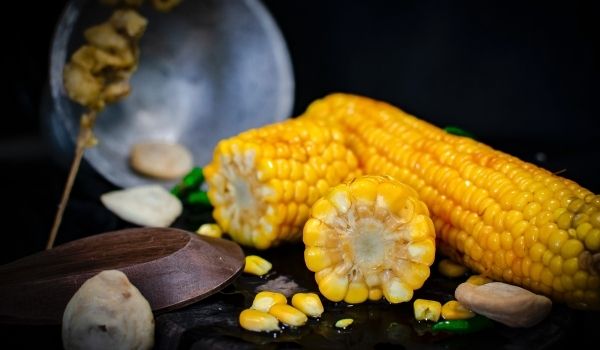
One of the most popular dietary components, corn is a rich source of nutrients such as carbohydrates. A considerable portion of these carbohydrates comes from insoluble fiber, making it a lower glycemic index food, meaning that it digests slowly and does not give a sudden sugar spike in the blood. Also, fibers nourish gut bacteria which assist in digesting food properly, improving the stool quality of your kitties.
Carbohydrates constitute a major portion of human dietary needs, but it is not the same with felines. Cats rely mostly on proteins for their nutrient requirements. Luckily, corn is also a good source of proteins. Reaching the right balance of these nutrients is the key to a healthy pet.
Besides protein, corn has antioxidants such as linoleic acid and vitamin C. These are important for keeping cats in good health since they fight off elements that cause signs of aging and therefore keep their bodies from deteriorating. You can also get several beneficial nutrients such as vitamins B, K, E, and some minerals such as iron, copper, zinc, manganese, potassium, and magnesium from corn in minor quantities.
Myths About Corn in Cat Food
With a sea of information and misinformation flooding the internet and aggressive marketing campaigns, it can be very confusing for pet owners to decide which foods are healthy enough. Let us look at some popular myths related to corns in cat feed and whether or not they hold any substance.
It Is a Filler
Many online resources claim that corn is used as a filler in pet foods, devoid of any nutrient value. It is far from the truth. Corn is a nutritious ingredient that adds value to the cat feed, including fibers and proteins. Experts suggest whole grains for humans and pets alike, owing to their role in improving digestion.
What is truly important is the way they are processed. Properly processed and cooked corns are easy to digest and improve the gut health of your pets. It is, therefore, important to seek a professional opinion before attempting to switch to grain-free cat food. Both diets can supply appropriate amounts of nutrients.
Cats Cannot Digest Corn
Another popular idea floating over the internet is that since cats are carnivores, they cannot digest grains. The truth is both cats and dogs can digest carbohydrates. The key is to serve them in a way and proportion suitable to their needs. According to an article published on the American Animal Hospital Association website, cats can digest over 90% of the starch found in a properly cooked diet with a 50% rice or corn component.
It Is an Allergen
Allergies are specific reactions to certain food items or substances that your body perceives as foreign. Grains can or cannot be allergens. Grain allergy does exist, but it is far less common than dairy or meat allergy. Another common misconception is that consuming grains may make pets susceptible to food allergies. However, experts believe there isn’t any scientific evidence to back this claim. In fact, as the Clinical Nutrition Center at Tufts University puts it, “what surprises many pet owners is that grains are actually uncommon causes of food allergies – most pets are allergic to animal proteins!” Nonetheless, if you notice your cat reacting negatively to any food item, consulting a certified vet would be your best option to help the little guy.
Nutrients Not Ingredients
Food supplies energy to the body to function. A well-balanced food should contain all the nutrients your cat needs. Simply looking at the ingredients does not help you identify the quality of the food. The focus should be on the nutrient balance found in a feed instead of the list of ingredients.
The source of the ingredients does not matter as long as they are available in a form that the pet’s body can use beneficially. All the components of a diet work in unison rather than in isolation. And have an overall impact on their health. Your cat needs sufficient fats and proteins, besides smaller proportions of carbohydrates, minerals, and vitamins.
An excellent way to identify the nutrient profile of the cat food is to take a look at the calorie percentage contributed by each ingredient listed on the pet food. It helps you assess possible deficiencies in the diet. Though not displayed on the product labels, the information is accessible from good pet food companies.
To estimate the crude protein content, first, measure the dry content of the food by subtracting the moisture percentage from hundred. Next, divide the protein percentage by the dry matter and multiply it by a hundred, and you will get your crude protein percentage. The Association of American Feed Control Officials (AAFCO) suggests a minimal 26% crude protein for maintaining an adult cat and 30% for growth and fertility.
You can use a similar method to identify the percentage of crude fat and carbohydrates from the guaranteed nutrient section and see if they equate to 9% and 10% respectively of the dry matter content as suggested by AFFCO.
Choosing Cat Diet
Commercially available cat foods that meet the criteria of providing a well-balanced, wholesome diet are an excellent source of energy for your cat. Veterinary experts suggest that a total of 90% percent of your feline’s dietary intake should comprise of these nutrient-balanced meals. You can offer them occasional treats or safe human foods, such as certain fruits, vegetables, or baked chicken. But all these treats and sparse food sharing should never go above 10% of their total dietary intake.
Deciding which cat food to buy for your pet can be overwhelming. It is best to consult a board-certified vet to help you identify the diet best suited to your cat. Such a consultation could also help in a timely diagnosis of any possible deficiency, allergy, or other specific requirements that your pet may have.
Some pet owners like to try homemade recipes for their cats. If you plan to do that, make sure to consult your vet for the recipe. Only a diet formulated by a certified veterinary nutritionist is a good option for pet consumption. Relying on a simple Google search for the recipe may deprive of or overdo certain nutrients for your beloved cat. Despite every precautionary measure, if your cat does display discomfort or health problems, do speak to your vet and only switch her diet when recommended.
Visit Chewy Shop
Final Thoughts
Cats are carnivores who need balanced food to meet their dietary needs. Since each individual is unique and may have its own set of health issues and needs, it is best to consult a board-certified vet to identify the right food and nutrient balance for your cat. Corns have somehow earned a bad reputation for their starch content. In reality, it is a highly nutritious food commonly found in cat feed.
When consumed in properly cooked, coarsely ground consistency, it can be a healthy snack for your kitty. However, remember to keep it as an occasional treat. Daily or too much consumption of corn is not a good idea. No-grain diets do not necessarily have a nutrient superiority over conventional diets. They have to make up for the starch component by relying on different sources such as beans, potatoes, or peas. Consulting a vet to make informed choices is far better than relying on fads.
Find out what other foods cats can eat or not eat:


